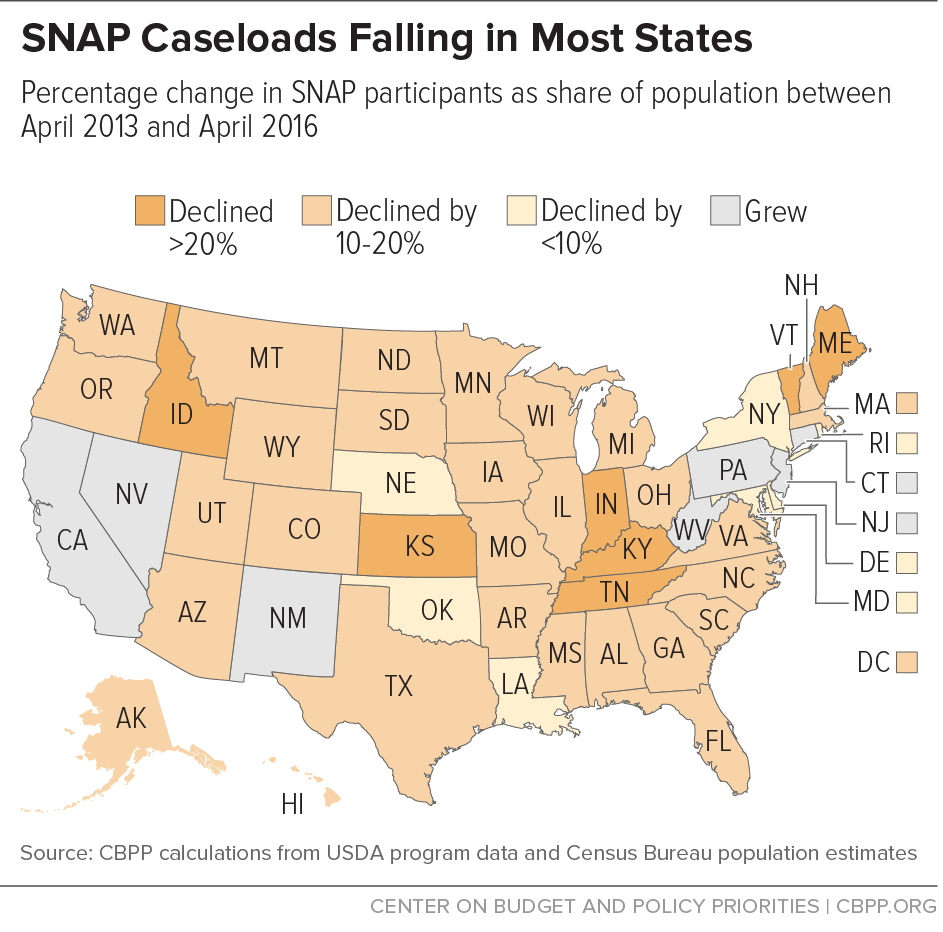BEYOND THE NUMBERS
SNAP (food stamp) caseloads have shrunk by more than 4 million people since peaking in December 2012, our new paper explains, reflecting both an improving economy and the return in many states of a three-month time limit for unemployed childless adults. The decline has been widespread: more than 40 states had fewer SNAP recipients in April 2016 than in April 2013 (see map).
SNAP spending also has fallen. Spending for the first nine months of this fiscal year was 4 percent below the same months of last year. The only time since 2000 when spending has fallen faster was in 2014, when the 2009 Recovery Act’s SNAP benefit boost ended.
The stronger economy likely explains most of the drop in caseloads over the last three years. SNAP grew significantly between 2007 and 2012 as the recession and lagging recovery led many more low-income households to qualify and apply for help. As the recovery reached more low-income households, caseload growth slowed markedly. Caseloads then fell by about 2 percent in both 2014 and 2015.
The decline has accelerated this fiscal year. SNAP caseloads fell by 4 percent between April 2015 and April 2016 — almost double the annual rate of decline in each of the previous two Aprils.
The return of the three-month time limit in January 2016 in about 20 states has contributed to falling caseloads — particularly in April, when people subject to the time limit began exhausting their three months of benefits. Caseloads fell by 773,000 people that month, the largest one-month drop since temporary disaster benefits for Hurricane Katrina victims ended in 2005. Caseloads fell by 2.8 percent in the states that began cutting people off SNAP in April due to time limits, while falling 0.8 percent in the other states.
The Congressional Budget Office (CBO) expects that as the economy improves, SNAP participation will fall by about 2 to 4 percent each year over the next decade: from nearly 46 million people in fiscal year 2015 to 33 million by 2026. The share of the population receiving SNAP will return to close to 2007 levels (at about 9 percent) by 2026, CBO projects.
To the extent that SNAP caseload declines reflect improving economic conditions for low-income households, they’re welcome. However, April’s large drop in states reimposing the time limit is troublesome. The loss of benefits is likely causing serious hardship for many.

